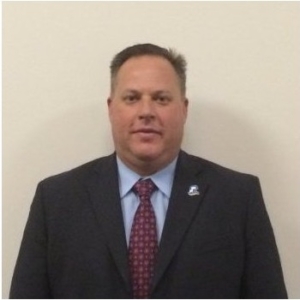 The Paul Hastings law firm recently released the third edition of, Breaking the Glass Ceiling: Women in the Boardroom, a study that focuses on the role that stock exchanges and their listing policies can play in achieving gender parity in boardrooms around the globe. Exchanges can help in the march towards a more diverse boardroom by including diversity figures in their listing requirements and/or punishing companies who don’t comply. Like any diversity initiative, the important question is, does it work?
The Paul Hastings law firm recently released the third edition of, Breaking the Glass Ceiling: Women in the Boardroom, a study that focuses on the role that stock exchanges and their listing policies can play in achieving gender parity in boardrooms around the globe. Exchanges can help in the march towards a more diverse boardroom by including diversity figures in their listing requirements and/or punishing companies who don’t comply. Like any diversity initiative, the important question is, does it work?
Tag Archive for: diversity
 Recently, tech-news website The Verge published a report on diversity at at the U.S.’s biggest technology companies. In data scraped from Equal Employment Opportunity reports filed with the government, the article revealed official stats on workforce diversity at Amazon, Apple, Google, Facebook, Intel, Microsoft, and Twitter.
Recently, tech-news website The Verge published a report on diversity at at the U.S.’s biggest technology companies. In data scraped from Equal Employment Opportunity reports filed with the government, the article revealed official stats on workforce diversity at Amazon, Apple, Google, Facebook, Intel, Microsoft, and Twitter.
The numbers weren’t assuring. While women made up 47% of the U.S. workforce in 2014, the seven big, publicly traded tech companies that The Verge tracked only averaged 29% female. Amazon had the highest share of women workers at 37%, while Microsoft came in with the lowest share of women workers at 24%.
The share of women in leadership roles was even more stark. On average, at the seven companies studied, only 18% of executives and senior managers were women. The company with the highest percentage of female leaders was Facebook, at 23%, while Microsoft had the lowest percentage at 13%.
These are embarrassing numbers (and just as embarrassing were the statistics on racial and ethnic diversity – on average, only 21% of leaders at these companies weren’t white). But they shouldn’t come as a surprise. Researchers have long identified the problems behind the lack of diversity in the technology industry.
What is surprising, though, is how clearly defined the solutions to these problems are. Women keep leaving the industry; we know why; we know how to fix it. Yet the gap persists. A recent report by Catalyst identified several concrete reasons high potential women in tech leave for greener pastures and what these companies can do about it.
The technology industry purports to create innovative solutions to the world’s toughest problems. Perhaps it’s time for industry leaders to shift their gaze toward their own ranks, and implement the solutions experts have crafted to solve one of tech’s toughest problems: the workforce gender gap.
Leaky Pipeline
Tech companies like to tout their work to develop the “pipeline” of women into the industry, sponsoring programs designed to get girls and young women interested in STEM fields. This work is important and laudable. But an early lack of interest in science and technology isn’t the only reason for the low rate of women leaders working now in the industry.
The diversity benchmarking and solutions organization Catalyst says high potential women actively seek to leave the industry. According to Catalyst, women who took business jobs in the tech industry after earning an MBA were more likely than men to leave for another industry (women, 53%; men, 31%). And women who started in business roles in other industries were less likely than men to migrate to the tech industry (women, 9%; men, 13%).
Male MBAs who left the tech industry were more likely than women to say they changed jobs for greater opportunities (men, 67%; women, 52%), while women MBAs were more likely to say the left for personal reasons (women, 21%; men, 12%).
“Organizations invest tremendous resources to attract high potentials, and if that talent walks out the door—for any reason—it is incredibly costly for the company. Not only has that talent taken their skills and training elsewhere, but new employees have to be recruited and trained,” writes report author Anna Beninger, director of research at Catalyst.
The attrition problems are well documented, and so are the reasons behind them. Catalyst says women regularly start in lower level positions in the tech industry than men after earning MBAs. That means they also start at lower salaries from day one, a pay gap that persists over time.
In the study, high potential women MBAs in tech said they faced unclear requirements for evaluation and advancement, while men said their goals were clear. High potential women MBAs in tech said they had fewer role models than men, and vastly fewer said they felt similar to their coworkers than men did.
“Feeling like an outsider relative to their coworkers affects their access to development opportunities, sponsorship, and ultimately their aspirations to the top,” Beninger writes.
“Given the dearth of women in tech-intensive industries, including those in business roles, it is crucial for senior-level men in tech-intensive industries to champion women, and in time, create more women role models.”
Clarifying evaluation and promotion requirements, paying employees fairly, ensuring workers are able to meet family responsibilities and still get their jobs done, building cultures that value people outside the majority, and having corporate leadership set the tone from the top on diversity — these are all things that can help stop the female and minority attrition from the tech industry.
In practice, these solutions will take hard work to achieve. Implementing new policies is easy — it’s changing people’s mindsets that is difficult. But it is possible and necessary. The tech industry needs the best minds out there to solve problems in an increasingly complex business environment. It won’t be able to attract and retain the top people until business leaders approach this problem earnestly. Their work is cut out for them.
By Melissa J. Anderson (New York City)
“We’re all in this together; it doesn’t matter what your gender, race or creed is.”
That is the philosophy of Larry Ostendorf, who oversees business development for the aerospace and defense market for Pacific Scientific Energetic Materials Company. With only a few competitors, the sales environment is largely based on the relationships he builds with his customers, which include aerospace and defense companies, the U.S. government and foreign customers. “My role is to make sure we’re well thought of, to make sure that we have the opportunity to share our capabilities.”
Ostendorf graduated from West Point and spent five years on active duty in the US Army, then he earned his MBA. He’s spent over 15 years in the corporate world as a project manager and business development professional. He has augmented his leadership background with 15 years in the National Guard holding various command and staff positions along the way.
No Rank in Civilian Life
Ostendorf says the corporate world is different from the military because it is a level playing field. He acknowledges that championing diversity has a generational component, and has found that millennials have a different approach than he does, as does the generation ahead of him. “Part of it is how you were brought up, which you can’t help; but also your influences.”
At his current positon, Ostendorf makes sure that all his team has a voice. “They are all successful professionals so I view my role as someone who can be there to guide them rather than give them a lot of direction. To me a major factor of inclusion is that everyone has a say, and that’s how my department runs.”
Ostendorf acknowledges that it is a challenge to find women to join the team. The aerospace and defense industry lacks diversity overall with too many men that have a military background or who have spent their whole career in the aerospace and defense industry.
When looking for candidates, he encourages leaders to broaden their search, reaching out, for example, to the Women’s Society of Engineers or other alternative places to find diverse candidates.
Another example of tapping a non-traditional hiring network occurred when his company was looking to fill a finance position and sent out a request through his National Guard leadership. His company ended up hiring a female soldier from his command, whom he otherwise wouldn’t have thought about. She has blossomed at the firm, and as Ostendorf says, “It’s about opening the door, and then they make it what they want. Diversity is about opportunity. If they don’t run with it, then that’s on them, but if you don’t ever give them the chance, you could be missing out on someone special.”
Standing up for Diversity
Given that it’s a small industry with few women, Ostendorf says that actually provides a lot of opportunity for women to stand out and make a name for themselves. At the same time, he sees that there remains the potential for the “double standard,” where men can perceive strong women negatively.
“We have to make that go away, and to do that, you have to set a good example in the organization. We have to have the courage to stand up and say, ‘Hey! Time out!’ and police our own ranks rather than letting it go, even if it’s a bunch of guys in the room after the woman leaves.”
As a leader, Ostendorf knows that his example influences others, through informal coaching and acting as a resource to help others navigate the job.
Advice for Other Leaders
His main advice for other leaders is “not to play old tape.” In other words, he thinks there’s a blind spot where leaders might pigeonhole people and not see their growth, even after they have changed roles.
He challenges leaders to take a hard look at their interaction and make sure that they are not inadvertently sabotaging others. “Are you cutting off women? Not treating them the same? We have to really examine our behaviors and see where we can make a positive change.”
He says that time and again in his career, he knows that issues in leadership will permeate the organization and manifest themselves as problems at the lower level. “If there are things going wrong, you have to examine the leadership climate. Whether it’s a company or a military organization, you can peel the onion back and see that problems beget problems,” he says. “It all comes back to leadership – the people who are in charge set the tone.
“We all have differences, but we need to embrace those and be sure we’re leveraging the different strengths everyone offers, because at the end of the day, it comes down to whether accomplishing the mission.”
By Cathie Ericson
 Do you hear what I hear? The call for men, and particularly white men, to join in on gender equality and diversity efforts is not only echoing loudly, it’s piling up into a chorus.
Do you hear what I hear? The call for men, and particularly white men, to join in on gender equality and diversity efforts is not only echoing loudly, it’s piling up into a chorus.
White male leaders are being not only invited, but implored to join the case for diversity and inclusion. The predominant argument is not just that diversity advocates want white male leaders to join in, it’s that the success of diversity efforts could be greatly enhanced by their participation due to their continued formal and informal positions of power and authority within companies.
With men holding over 82% of board positions in Fortune 1000 companies, and a significant number of those men being white, their participation in Diversity & Inclusion (D&I) efforts has been proposed as “Creating a New Normal” in the Huffington Post.
So with the invitation in their hands, what keeps white male leaders holding back on their RSVP to diversity and inclusion?
With all of our editorial focus on engaging white men, we thought it useful to take a step back and remind ourselves of the barriers we must navigate in doing so.
Challenges to Engaging White Men
As Chuck Shelton, Chief Executive Officer at Greatheart Leader Labs and moderator of the recent event that theglasshammer.com held on the topic has said, “No business strategy, including D&I, will deliver optimal results when many with position power (white men, in this discussion) disconnect from the strategy.”
The landmark study to date on engaging white men in diversity & inclusion efforts remains his organization’s “White Men’s Leadership Study” which pointed out that white men are less likely to be engaged in diversity and inclusion initiatives at companies.
White male leaders hold both the purse strings when it comes to D&I programs and the social influence necessary to make these programs work. Authors Shelton and Thomas noted that white men are “a significantly underperforming asset in every company’s global D&I investment portfolio.”
The report identified many dynamics into why while male leaders remain both an underperforming – and perhaps undervalued – asset in the movement for diversity and inclusion.
Feeling Excluded
You can’t RSVP to a party you don’t feel invited to. Just a couple years ago, the biggest factor revealed in the study was that white men did not feel included in Diversity & Inclusion. Nearly 70% of white male respondents agreed with the statement, “It is still not clear diversity initiatives are meant to include white men.” 60% of women and minority leaders agreed, too.
This was not limited to a perception among white male leaders. Women and minority leaders didn’t necessarily see the value of including white men in inclusion and diversity programs. “Leaders who are not white and male may quietly doubt that white male inclusion will open doors for them,” the WLMS report said. But when Diversity & Inclusion efforts don’t actively engage white men, they are prone to exclude them.
When women and minority leaders shoulder D&I initiatives, and those initiatives are not seen as owned by all and in everybody’s interest, it creates counter-dynamics. A study published by the Academy of Management illustrated that diversity-efforts on the behalf of women and minorities can be negatively viewed as scheming and (social group) self-serving. The researchers reported, “Ethnic minority or female leaders who engage in diversity-valuing behavior are penalized with worse performance ratings than their equally diversity-valuing white or male counterparts,” which only reinforces the glass ceiling. The research also points out the paradox that for white men “valuing diversity gave a significant boost to ratings for warmth and performance.”
The authors of Gender in Organizations: Are Men Allies or Adversaries to Women’s Career Advancement write, “By excluding men from the focus and development of strategies to attentuate gender disparities, businesses are missing an opportunity to effect change.”
Being protective about diversity and inclusion doesn’t ultimately advance its interests, and engaging white men – who might not feel invited by default – cannot be a passive exercise. It must be an active effort.
Being Skeptical
Another of the biggest challenges identified was skepticism on behalf of white men on the value of diversity and inclusion programs, as well as the suspicion that some people may receive jobs or promotions that they are unqualified for through these programs. The WMLS researchers explained, “Progress is stifled by the perceived tension between the qualifications of diverse employees and the organizational commitment to diversity.”
Another form skepticism took was deflection of relevance. Some white, male respondents seemed irritated to be part of a study on race and gender, and responded with what the report authors called “deflective comments”, such as asserting the questions were unfair or that race and gender doesn’t matter these days. Shelton and Thomas wrote, “We need to recognize deflections, and respond to such viewpoints through honest, straightforward dialogue.”
While prejudice is something you can put your finger on, unconscious bias often is not. Becoming aware of the unconscious bias in each of us, and how it’s at play in the workplace, for example through stereotype threat, helps to reaffirm the importance of D&I efforts.
Also male leaders who are trailblazing in diversity and inclusion have repeatedly advised that to engage men in leadership positions with the value of D&I programs, focus on measurable results (and measuring results) of diversity efforts such as impact on the bottom line and driving innovation in the workplace.
Having Perception & Communication Gaps
A third major factor in struggling to engage white male leaders was that they already perceived themselves to be effective at diversity and inclusion…way more than their peers did.
White men were twice (45%) as likely as women and minorities (21%) to view white male leaders as effective in the areas of diversity and inclusion. The perception gap extended to white men’s effectiveness at coaching and improving the performance of diverse employees (33 points gap); building strong, diverse teams (36 points); promoting diverse talent on merit (36 points); and including diverse voices in decision making (40 points.)
While perception is subjective, statistics showing underrepresentation of diversity are not. The authors suggested that with such a disparity in perception around effectiveness, conversation requires “care and focus,” in which some conflict is to be naturally expected and handled.
“Candor among peers and co-workers is a very important element to this whole process,” said Shelton. “Real diversity and inclusion requires care and ensuring everyone feels that they are part of the effort, including white male leaders.” They noted, “Findings in this research build the case for conversations of care and candor, as we seek to engage and equip white men to integrate diversity and inclusion more effectively into their leadership work.”
Invitation & Opportunity
With the invitation to men being extended on more fronts, as far as the United Nations, perhaps exclusion is becoming less of a barrier for engaging men – perhaps now, the invitation is clear.
Speaking recently with Shelton, he shared, “We’re seeing a lot of organizations in which male leaders are up for ally development. The real measure will be when more men are actually active and accountable as allies and sponsors.”
Equally important is how we co-host the party with men. When we sit together at the table of diversity, we’ll be more likely to evoke change if all parties feel involved and invested in the process, the potential, and the outcome.
By Aimee Hansen
 Gender diversity and inclusion doesn’t just happen, as Catalyst shows every year at its awards conference. A sustained improvement in the percentage of women in corporate workforces and leadership comes from hard work by companies to achieve and maintain set goals. It also requires a visibly demonstrated commitment to diversity by those in charge.
Gender diversity and inclusion doesn’t just happen, as Catalyst shows every year at its awards conference. A sustained improvement in the percentage of women in corporate workforces and leadership comes from hard work by companies to achieve and maintain set goals. It also requires a visibly demonstrated commitment to diversity by those in charge.
Honorees at this year’s Catalyst Awards Conference shared their companies’ secrets to success in increasing the percentage of women in leadership levels and throughout their companies’ workforces. The winning programs at Chevron Corporation and Proctor & Gamble combined three tried and true ingredients for advancing women at work: accountability, common sense, and leaders who took personal responsibility for improving diversity and inclusion at their companies.
“How we are behaving in any interaction speaks louder than any company effort,” said Melody Boone Meyer, president of Chevron Asia Pacific Exploration and Production Company. “Your behavior is how people read what’s real or not. The communication is there, but much more important is whether you’re living that.”
“Your behavior is how people read what’s real or not. The communication is there, but much more important is whether you’re living that.”
At the conference in March, Meyer, along with Mike Wirth, executive vice president of downstream and chemicals at Chevron; William P. Gipson, chief diversity officer and senior vice president of research and development at Proctor & Gamble; and Colleen Jay, president of global hair care and color at Proctor & Gamble, took to the stage to describe not only how their companies changed their approach to improving gender diversity, but also their personal journeys with taking responsibility for diversity as well.
As Meyer said, “Leaders need to live it.”
Accountability
Leaders from both companies detailed how they were held accountable for meeting corporate gender diversity goals.
Wirth explained that, at Chevron, leaders have to answer for their diversity action plans as part of their performance reviews. He also described an exercise the company’s CEO had leaders undertake: “The CEO said I want you to go out and spend time with three people who are very different from you and I expect you to respond,” he recalled.
“Accountability is nothing unless you have goals,” Gipson agreed. “Targets change everything.”
Proctor & Gamble ties diversity goals to executives’ stock options, he said. But the goals aren’t easy to meet and they aren’t merely window dressing to placate investors who care about diversity – they’re stretch goals.
“To really move the needle, you need to have some stretching,” Gipson said.
Indeed, Wirth commented, Chevron even employed reverse inventives at one point. “If you didn’t make progress, the bonus would be affected for everyone in that group,” he said, explaining that Chevron’s leaders wanted to make sure executives understood that diversity was a shared responsibility.
Common Sense
Diversity initiatives wouldn’t work without a heavy dose of common sense, as well. For example, Gipson explained that a few years ago, leaders at Proctor & Gamble realized women were leaving the company at a disproportionate rate. The company undertook a workforce survey to figure out why.
One of the reasons, P&G discovered, was that the company’s flex work program just wasn’t working. Offering employees the ability to work flexibly is one way companies can help their entire workforce meet their personal responsibilities. Since women as a group bear the brunt of child- and elder-care disproportionately compared to men, flex programs have been identified as a way for companies to retain female employees.
It turned out, Gipson said, that P&G’s flexible work program wasn’t flexible enough.
“We were trying to mandate when and where to work flexibly, but life is not really that way,” he explained. The company amended its program based on the survey results.
Leadership Responsibility
Finally, the panelists described what is possibly the most important part of an effective gender diversity initiative. Leaders have to internalize the value of diversity and demonstrate that value in their personal actions.
For example, Johnson said she and other P&G executives help each other keep track of blind spots.
“We help keep everyone sharp so we can role model that going forward,” she explained.
Similarly, Wirth described how he had to face his own personal blind spots a few years ago when Chevron undertook a dramatic restructuring. He picked all white men to lead his new team.
“I got a lot of feedback from the CEO, my kids, and women in my organization,” he said. “I had to do a lot of reflection on myself. I genuinely believed I had the right beliefs and behavior, but that’s not good enough. People need to see action.”
“I got a lot of feedback from the CEO, my kids, and women in my organization,”
He continued, “As a white male, I’ve got an extra responsibility to catalyze the discussion [on diversity], and create an environment where everyone is supported and everyone understands the expectations.”
Gipson described how, as an R&D executive, he had to learn to “embrace the soft stuff.”
“It’s the hardest stuff,” he said. “But no matter how much progress we’ve made, we can always get better.”
That attitude – that we can always get better – is an important one in diversity and inclusion. Simply meeting the numbers isn’t good enough. True inclusion will require everyone in the workforce – especially leaders – to keep pushing themselves harder to identify and change their own personal weaknesses when it comes to diversity and working to change their companies for the better.
By Melissa J. Anderson (New York City)
It is my pleasure to publish this piece of research focusing on the experience of LGBT women who work within the UK’s financial and professional services industries. We aim to explore the perceptions, realities, and trends around how women interpret their environment whilst at work.
Our respondents to this UK survey are mainly readers of TheGlassHammer.com, some of whom attended our 2012 event “Managing Multiple Identities: Being Out at Work,” which was held in London. Our methodology was both qualitative and quantitative for this research and we formed questions around the following hypothesis:
“Competence assumed and compensation being equal, LGBT employees feel more engaged at work if they are shown increased organisational and managerial support.”
This approach to our research is very much at the core of the work we do at Evolved Employer. We engage with clients to examine and improve organisational culture and work with leadership to increase competency around diversity and inclusion issues so that talent and business strategies can be successful. After all, if culture can be defined as “the way we do things around here” then it is critical for leaders to understand how to engage and include different types of people. This has been shown to increase performance and engagement and this is the business case for diversity work.
I am delighted to welcome you to our first in the series of reports on Managing Identities at Work. This report focuses on “Being out at Work” and we look at the LGBT experience through a gender lens. By conducting research and hosting career panels exploring career challenges for certain talent groups, such as LGBT employees, we aim to shed light on what companies can do better for diverse high performers.
After all, if culture can be defined by “the way we do things around here” then it is critical for leaders to understand how to engage and include different types of people so that every individual in the firm can bring their best selves to work. This research report is the first of its kind to explore specifically the workplace perceptions and experiences of professional lesbians in financial and professional services.
The Glass Hammer is perfectly placed to examine deeper issues around gender and identity at work and our goal is to empower women of all types to advance in their careers. Our research arm, Evolved Employer, is working hard to benchmark diversity so that the industry as a whole can better understand how to remove and reduce systemic biases. In my opinion, it is only when we work in this manner that we can truly further the dialogue around diversity – to start leveraging diversity as a business driver. Achieving inclusion is a cultural change project; changing culture is only possible when led with a vision and backed by compliance, not the other way around.
The most striking finding from this report is that many women, despite being out to everyone, are still uncomfortable in their immediate environment and would like their company to do more education around LGBT issues. Reassuringly, several companies were recognized as going above and beyond in their efforts to ensure organizational and managerial support, reinforced with strong networks and programmatic solutions.
I hope that you enjoy this whitepaper and share it with leaders, managers, employee networks, straight allies, and LGBT employees alike.
 Sometimes dad knows best. That’s what Natasha Moffitt, Partner at King & Spalding, learned when following her father’s suggestions for her career path.
Sometimes dad knows best. That’s what Natasha Moffitt, Partner at King & Spalding, learned when following her father’s suggestions for her career path.
Raised in Germany by a German mother and American father, Moffitt decided in high school that she wanted to be a lawyer, but her father urged her to leverage her skills in math and science. He counseled her to first pursue a computer engineering degree (an emerging field of study at the time), and then a career in patent law; and that’s when her career path was born.
Moffitt graduated with a computer engineering degree and a minor in German, and then worked as an engineer for several years before pursuing her law degree, focused all the while on becoming a patent attorney.
“Many engineers don’t consider patent law as a career path until later in their careers; I decided to pursue patent law from the get go.” She became a summer associate at King & Spalding in 2000, joined the firm full time in 2001 and was elected to the partnership in 2008.
Meaningful Wins Are Key to Satisfaction
While she is naturally pleased about all the wins she achieves for clients, one win in particular stands out. She defended a client in patent litigation brought by a competitor, with enormous stakes that were “do or die” for both sides.
For more than a month the case was tried, and she was delighted to score an outright win, which was later affirmed on appeal.
“Unfortunately, patent litigation has become a routine ‘cost of doing business’ for many companies, but in this case, the suit was directed toward an important part of the client’s business, and it was critical that we win. I always play to win, but this win was especially sweet.”
Moffitt currently is excited about the business development work she’s doing in Germany and other German-speaking countries. “It’s a good fit, given my language fluency and heritage. German tech companies are frequently sued in the United States for patent infringement. I am fortunate to be collaborating with a group of partners who also have German ties and an interest in expanding our footprint to the German market.” She describes it as a “coming home of sorts,” allowing her to marry her personal history with her profession in a way she never dreamed possible when she started her career.
She also views the recent changes in patent law as an area of ongoing fascination – with the increased interest by the Supreme Court, the media, legislators and company executives. “There is ongoing spirited debate involving patents and what should be patentable,” she says. “Different industries have differing views – there’s a lot of discussion but no clear answers. As the entire industry changes in an unprecedented way, we will be tracking the developments and counseling our clients on what these changes mean for their patent portfolios and litigation strategies.”
More to a Law Career than the Law
As Moffitt has ascended the ladder, she’s learned that law partners must wear multiple hats – as mentors, teachers, managers, recruiters, marketing professionals and accountants.
“When I started my legal career, I expected that lawyers would spend most of their day practicing law; I didn’t appreciate how many roles we would have to play,” she says. “Law school gives you the skills you need to become a great lawyer. It does not train you how to do the rest. Over time, I have learned the business side of law and how to build a practice, but had I realized then what I know now, I would have focused the early part of my career on not only doing excellent work, but also on learning the business of building a practice.”
Changing Perceptions
One challenge she believes women may face in the industry is one of perception. “For high stakes patent litigation, more senior, male litigators may be perceived to be a safer hiring choice than female litigators,” Moffitt says. “Women litigators simply need to demonstrate that this perception is unwarranted. With time we can change these biases, but it takes women stepping up and showing they are as good as, if not better than, their male counterparts.”
She sees the industry becoming more accessible as more women enter into math, science and engineering-related disciplines in college, which may translate into more women practicing in the area of intellectual property, but there is still room for improvement.
She believes it’s important for those already working in the technology industry to educate the women who are following them about what the opportunities are – that they can become engineers, scientists and researchers, but there’s also an alternative path in the law.
And for women who are getting started, she advises them to invest in their career by taking advantage of every opportunity and experience – and if you’re not getting the opportunities you seek, then go find them.
“People will be impressed by the initiative. It’s vital to create opportunities for yourself if they’re not coming to you for one reason or another.”
And she says that while women should be the best they can be at any given moment, they should cut themselves some slack.
“Women can be unnecessarily hard on themselves – we want to be perfect in all areas – as a mom, spouse, and employee – and then we give ourselves a hard time when we feel we’re not meeting our own expectations.”
For women at her level, Moffitt recommends building a practice by focusing on one particular area for business development. “Sometimes lawyers want to appear as a jack of all trades, but that can dilute the expertise you do have,” she says. “Clients are looking for subject matter experts, so you don’t want to spread your expertise too thin.” She sees this as particularly important for women who are balancing family, work and other time commitments, that in order to make your limited time count, you have to identify your strengths and focus your efforts there.
Committed to Diversity
Moffitt says her firm is very committed to diversity with committees, initiatives and events, and she has been active in both informal and formal diversity programs. She feels fortunate that she has had lots of mentors at the firm over the course of her career, and in return she has mentored others in a variety of capacities – always finding the informal relationships to be invaluable.
Currently, she is co-leader of the Atlanta office’s Women’s Initiative, which creates networking and mentoring opportunities for the firm’s Atlanta women lawyers, but also provides tools to help women attorneys expand their profile internally and externally. Recently she hosted a guest speaker to talk to the women attorneys about how to maximize the impact and visibility of their LinkedIn profile, for example.
Sharing Love of Horses and Heritage
A busy mom with three kids ages three, six and nine, Moffitt sees weekend time as family time. One hobby she’s been able to share with them is her love of riding dressage competitively– she recently competed in the U.S. national and regional championships. Her oldest daughter has started riding, and all of them enjoy spending time at the barn.
In addition she is sharing her German heritage, raising them to be bilingual by attending an international school where they learn in German and English.
“It’s a challenge to make time for everything, but it’s worth it. I’ve gotten really good at time management!”
By Cathie Ericson
 Much of what I read about advancing women’s careers has been from the perspective of women. Although this is an important dialogue that we must continue, we are all—women and men—responsible for maintaining a diverse, inclusive culture. By bringing men—especially business leaders—into the conversation, we can reach the best possible solution, so that everyone walks away from the table feeling like they have gained something.
Much of what I read about advancing women’s careers has been from the perspective of women. Although this is an important dialogue that we must continue, we are all—women and men—responsible for maintaining a diverse, inclusive culture. By bringing men—especially business leaders—into the conversation, we can reach the best possible solution, so that everyone walks away from the table feeling like they have gained something.
As part of my role at PwC, I lead a series of dialogues with our male leaders that aim not only to educate but also to provide a forum for talking candidly about the challenges they face as they work to strengthen the sense of inclusion our professionals feel in our firm. Bob Moritz, PwC’s chairman and senior partner, has set the tone at the top by prioritizing diversity and inclusion; creating lasting change, however, this requires that all our partners, principals and staff participate in bringing that vision to life.
We have made significant progress, but this journey requires patience, courage and the ability to communicate across differences. In a negotiation, when the parties stop communicating, the process can break down.
Before I delve into what men stand to gain from supporting the advancement of women, let’s take a look at a few ways communications can break down and what we can do about them:
1) Failed connections – In their recent New York Times article, “Speaking While Female,” Sheryl Sandberg and Adam Grant examined an unpleasant gender bias professional women often face during meetings: the risk of being interrupted and unheard (although a man saying the same thing will get nods of approval) or the risk of being disliked or considered too aggressive. For example, a male TV producer helped craft a solution (no interruptions during pitches) that made the entire team more effective. Had the suggestion come from a woman, it might also have gone unheard – thus highlighting the important role men can play in recognizing subtle biases and leveling the playing field for women, so all perspectives can be heard.
2) Fear of engagement – All too often, even well-meaning men don’t speak up for women because they fear making a mistake or being criticized. For example, some white males at PwC have voiced concerns about being automatically labeled “the bad guys” during diversity discussions. As another article by Adam Grant pointed out, individuals struggle to speak for or help groups with which they don’t identify. That changes once the individuals feel they have a vested interest. Helping men and women build stronger relationships and identify opportunities for mutual gain, such as through candid and collaborative dialogues, can be a big part of the solution.
3) Questioned intent – I’ve also heard from well-meaning men that they sometimes feel that women resist their efforts to reach out. Women either did not realize assistance was being offered or they wanted to prove they could do it on their own. We all need to be more attuned to those around us and give them the benefit of the doubt. And men may need to re-examine their approach to help make sure that it is respectful and authentic without the implication that men are here to solve women’s problems.
So with these potential pitfalls in mind, what do men (and the organizations they work for) stand to gain from stepping out of their comfort zone and helping advance women’s careers?
1) Enhanced leadership skills – Investing in relationships and building trust are key leadership skills. When men sponsor and mentor only those who look like them, they overlook important leadership opportunities and alienate potential allies. At PwC, we require our firm leaders to have had distinctive experiences working with diverse professionals, because we believe it will help them broaden their perspectives, while creating a more inclusive environment.
2) Financial success – Many organizations tie leaders’ salaries and promotions to the success of their unit or the overall organization. Several studies show that organizations perform better when women are well represented. PwC’s own research also demonstrates the critical importance of this issue. Bottom line: Diversity drives innovation—a necessity in today’s fast-changing business world. Moreover, when women feel leaders appreciate their contributions and are optimistic about their professional futures, employee engagement increases and turnover decreases—another win-win, particularly given the shortage of skilled talent.
3) Market relevance – In an increasingly complex and global business environment, the ability to work, manage and communicate with people who are different from you is an essential skill. A better understanding of the challenges for women in the workplace can improve men’s interactions with clients and other stakeholders, who increasingly expect cultural dexterity from service professionals. Men who can easily and effectively work and build bridges with diverse stakeholders create opportunities for themselves and their organizations.
4) Personal gain – Like women, many men are more than just business professionals – they are fathers, husbands, uncles and grandfathers. Research from Catalyst shows that gender equality provides significant personal benefits to men, including better health and enhanced relationships with your spouse or partner.
With a lot to gain and little to lose, all men, particularly the business world’s white male majority, need to join the conversation about advancing women. The launch of the HeForSheCampaign’s “10X10X10” initiative, for which PwC is a founding sponsor, at the World Economic Forum in Davos last month, should help take that conversation to a new level, but we as a society still have a long way to go to drive lasting change.
As I’ve learned in my discussions, this change won’t come naturally to all. Organizations need to create safe forums where both parties can share their perspectives and educate their people, because even the most well-intentioned individuals may have blind spots. Women can help bring men into diversity conversations by inviting male colleagues to participate in women’s networking events and encouraging them to act as “allies.” I also encourage my female colleagues at PwC to reach out to senior male colleagues to find common ground. We are often surprised by how much we share in common, and how much both mentors and mentees learn from each other’s differences.
If both men and women can hear each other out and be open to new perspectives, the result can be a winning proposition for everyone in the room.
By Chris Brassell
 Recently, I was asked to speak at The Conference Board’s Diversity and Inclusion conference in NY. My topic can be paraphrased into ‘why culture eats strategy for breakfast when it comes to diversity’ and most other things for that matter. In my session I was asked, “Do you still think that being LGBT matters since there has been considerable societal and workplace progress recently?”
Recently, I was asked to speak at The Conference Board’s Diversity and Inclusion conference in NY. My topic can be paraphrased into ‘why culture eats strategy for breakfast when it comes to diversity’ and most other things for that matter. In my session I was asked, “Do you still think that being LGBT matters since there has been considerable societal and workplace progress recently?”
My response was, “It depends on which firm you work for.” This holds true for a similar question regarding gender and essentially any social identity matter these days. Anecdotally, over the past seven years of theglasshammer’s existence, a small number of you have told me that it does not matter; that you are a woman at work and it has no bearing on your career. I see a small group of people echoing this sentiment when it comes to applying the same question to being LGBT at work. Conversely, most of you have told me or have acknowledged formally in print that, yes being a woman does matter and having other social identities, such as LGBT or being Multicultural, are factors that affect how people perceive you at work regardless of your talents. It even has affected how some of you see yourselves, famously coined as the imposter syndrome.
My first caveat is that you are entitled to any construct of belief that works for you, as personality and personal experiences are so often overlooked or discredited when they should not be. Ambition and access to the right relationships along with the natural desire often embedded into our personalities (conscious or otherwise) to assimilate to dominant group behaviors can trump a lot of adversity in any part of the world or in any workplace.
Many people enjoy hard work and find the climb exhilarating. There is something to be said for believing something and then growing your reality from that place. That is why we have theglasshammer and why books like Lean In exist; to give you every chance to think about networking, negotiation, and career advancement on your terms should you choose it. Further to that, if you buy into the concept that you control your destiny, you won’t see or perceive obstacles to be because of your social identity at work; this concept works for some people, myself included, until I studied Organizational Psychology. There is a certain personality who can make it anywhere, but the question sometimes becomes at what cost? I count myself in this category. If I was a flower I could grow happily on a rock. The downside of this strategy is that I would be completely ignoring the environmental forces around me that help other flowers grow with less energy and better soil on the meadow.
Stereotypes- Alive and Well
I want to share a shocking, previously unseen study with you that my good friend and associate Dr. Frank Golom conducted to prove that we don’t live in a post-bias world and that social identity matters.
The new study uses the famous and now forty-year-old “Think Manager, Think Male” trait research conducted and progressed by Virginia Schein. This new study by Dr. Golom et al extends the groups to include gay managers and lesbian managers in addition to (presumed) straight female and male manager categories.
Dr. Golom, whilst at Columbia University, surveyed almost 200 undergraduate and graduate students in the NY metro area. Eighty percent were women and a small percentage of all respondents were LGBT-identified. The results will astound you and make you think twice about any beliefs you may have around the next generation creating change just by virtue of being born as Gen Y.
Despite the survey responders being mostly women, the group that was elected as having the most leader-like traits was the straight male manager group. This group was ranked as most competent, productive, and emotionally stable amongst other attributes.
So perhaps these young, educated women might answer a direct question such as, “Do you want to be CEO?” as, “yes”, yet blatantly stated their group as a whole to be a less able group (remember this is a stereotype, actual competency levels were not measured as no individuals were presented here as subjects).
Furthermore, lesbians as a stereotyped group were rated as hostile and less competent than straight men yet had an edge over straight women ( as ranked by straight women, go figure?). Gay men really bore the brunt of the evils of stereotyping in this survey. They were assigned very low rankings on every trait that is considered to be leader-like, despite the slogans that people write on their Facebook such as, “It gets better”.
How can this be, I hear you ask? Well, you have all heard about unconscious bias and stereotyping but perhaps it is good to note that (mostly straight) women are guilty of it too. It is less discussed that (mostly white) women have a role in keeping the status quo in place due to their proximity to the current power structure, just as it is also a stereotype to think men don’t want to be involved and do something.
The Glass Hammer
Executive coaching, leadership development coaching and career navigation coaching for women looking to develop, advance and lead in top roles.
